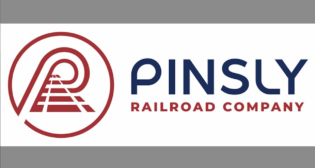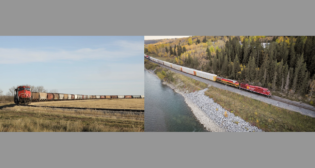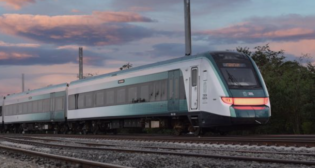
Freight rail vital to nation, industry asserts
Written by William C. Vantuono, Editor-in-ChiefAs Railroad Day on Capitol Hill unfolded Thursday, business and labor leaders, government officials, and rail industry employees representing more than 350,000 American workers from around the country canvassed Capitol Hill in support of policies that enable the freight rail industry to create jobs, continue record infrastructure investments, keep U.S. businesses globally competitive, and aid America’s economy recovery.
Participants in the annual event include the American Short Line and Regional Railroad Association (ASLRRA), Association of American Railroads (AAR), International Association of Machinists and Aerospace Workers (IAM), National Railroad Construction and Maintenance Association Inc. (NRC), Railway Engineering-Maintenance Suppliers Association REMSA), Railway Supply Institute (RSI), Railway Systems Suppliers Inc. (RSSI), Railway Tie Association (RTA), Transportation Communications International Union (TCU), Sheet Metal Workers’ International Association (SMWIA), United Transportation Union (UTU), and other rail industry representatives (including from Railway Age magazine).
 “Americans whose livelihoods depend on a healthy rail industry want Congress to know that freight rail is working for our country and carrying the load so taxpayers don’t have to,” said Association of American Railroads’ President and CEO Edward R. Hamberger (pictured at left). “At a time when many industries are cutting back and businesses aren’t hiring, freight rail is investing billions of its own capital and hiring American workers.”
“Americans whose livelihoods depend on a healthy rail industry want Congress to know that freight rail is working for our country and carrying the load so taxpayers don’t have to,” said Association of American Railroads’ President and CEO Edward R. Hamberger (pictured at left). “At a time when many industries are cutting back and businesses aren’t hiring, freight rail is investing billions of its own capital and hiring American workers.”
“All across this country, businesses large and small depend on freight rail to deliver the goods and support their jobs. Our ability to continue investing so America’s rail network remains the envy of the world is critical to our country’s economic recovery,” Hamberger said.
America’s freight railroads generate $265 billion in total annual U.S. economic activity and move one third of American exports, all while offering the lowest rates in the world. In addition to helping keep America economically competitive, the industry employs more than 175,000 workers in well-paying jobs—each of which supports another 4.5 jobs across the country and 1.2 million jobs across the broader economy in fields such as manufacturing and retail, Hamberger noted. In 2011, the country’s freight railroads plan to spend $12 billion to grow and modernize the nation’s rail network.
“In addition to 175,000 rail industry jobs, our nation’s freight railroads directly support over 150,000 manufacturing jobs in the railway supply industry,” said Tom Simpson, president of the Railway Supply Institute (pictured at right). “We need a robust and vibrant freight and passenger rail network because it directly impacts the livelihood of our industry and the livelihood of our workers.”
Rail industry advocates want lawmakers to maintain the reasonable regulatory structure that has spurred a railroad renaissance and made America’s freight railroads the safest, most efficient, reliable and affordable in the world.
“America’s short line and regional railroads are investing to preserve connections to thousands of local communities and small businesses across America,” said American Short Line and Regional Railroad Association President Richard F. Timmons. “These same small railroads account for tens of thousands of jobs, both with the railroads themselves and the railroad customers which they serve.”
 “Now more than ever, it’s imperative that sound transportation and tax policies be in place to encourage job creation and private-sector investment in our transportation future,” said Timmons (pictured at left).
“Now more than ever, it’s imperative that sound transportation and tax policies be in place to encourage job creation and private-sector investment in our transportation future,” said Timmons (pictured at left).
Rail advocates also support investment incentives such as the Section 45G tax credit which aids small, local short line railroads and the Section 130 program which provides dedicated funds to states for grade crossing safety projects. Participants oppose proposals to increase the size and weight of trucks on our nation’s highways which would cause significant damage to our nation’s highway infrastructure and divert traffic away from environmentally friendly freight railroads.
“At a time when people are out of work, freight rail is hiring,” said AAR’s Hamberger. “At a time when businesses are struggling, freight rail is delivering. Through good times and bad, we plan to keep moving for the people and customers who depend on us—and that’s exactly what we need Congress to let us keep doing.”



